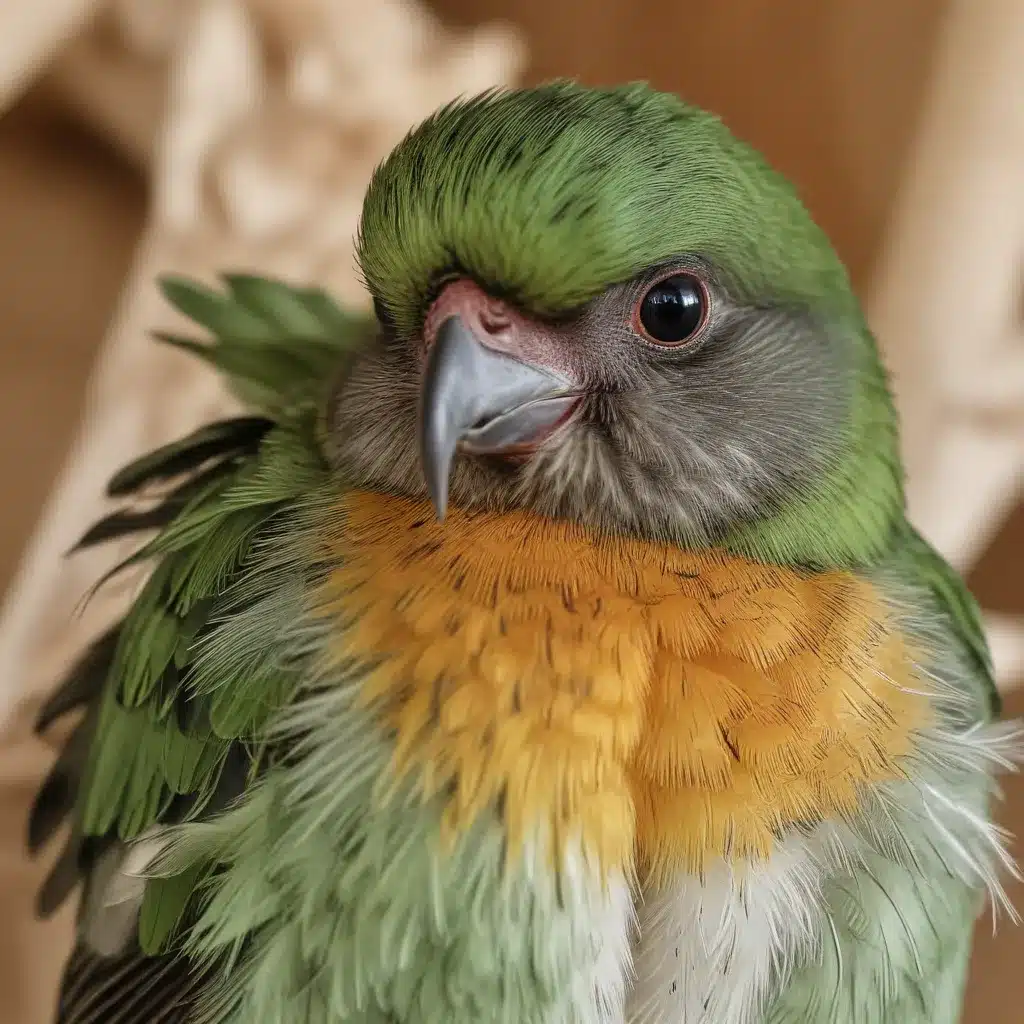
Avian Adoption and Integration
Bringing a rescued bird into your home can be an immensely rewarding experience, but it also requires a significant commitment. As an experienced avian caretaker, I’ve seen the joys and challenges that come with integrating a feathered friend into the family. Whether you’re adopting a parrot, cockatoo, macaw, or even a beloved budgie, the process requires careful preparation, patience, and a deep understanding of the bird’s unique needs.
Rescued Bird Species
The avian rescue world is vast, encompassing a diverse array of species, each with its own set of characteristics and care requirements. Parrots, for instance, are known for their vibrant personalities, impressive intelligence, and strong bonds with their human flock. Cockatoos, with their endearing crests and affectionate nature, can make wonderful companions but also demand meticulous attention. Macaws, the larger-than-life members of the parrot family, captivate with their striking colors and playful antics, yet their care needs can be quite challenging. And let’s not forget the humble budgie, a delightful little bird that can thrive in the right home environment.
Adoption Considerations
Before embarking on the journey of avian adoption, it’s crucial to carefully consider the specific requirements of the species you’re interested in. The size of the bird’s enclosure, or cage, is a primary factor. Parrots, in particular, require spacious, multi-level habitats that allow for ample movement and natural behaviors. Dietary needs are equally important, as rescued birds may have been fed an improper diet, leading to health issues. Understanding the unique behavioral traits of each species, such as their social needs, level of activity, and potential for screaming or feather plucking, can also help you determine if the bird is a good fit for your household.
Preparing the Home Environment
Creating a safe and enriching environment for your rescued bird is paramount to their well-being and successful integration into your home.
Bird-Proofing the Home
The first step is to thoroughly bird-proof your living space, identifying and addressing any potential hazards. This includes securing windows and doors, covering electrical cords, and removing any toxic houseplants or cleaning products. Ensure that the bird’s designated area is free of sharp edges, small openings, or objects that could pose a risk. Provide sturdy, appropriately-sized perches and toys that cater to the bird’s natural inclination to climb, chew, and explore.
Providing Enrichment
Enrichment is crucial for a rescued bird’s mental and physical well-being. Incorporate a variety of foraging toys, puzzle feeders, and shredding materials to stimulate their natural behaviors. Offer an assortment of perches, ladders, and swings to encourage exercise and climbing. Rotate the toys and activities regularly to maintain their interest and prevent boredom.
Introducing the Rescued Bird
The introduction and integration process requires a delicate, step-by-step approach, as the bird adjusts to its new environment and learns to trust its new human family.
Acclimation Process
When the bird first arrives, allow it to acclimate at its own pace. Place the transport cage or carrier within the designated living area, allowing the bird to emerge and explore when it feels comfortable. Observe the bird’s body language and behavior, taking cues from its level of confidence and comfort. Resist the urge to force interaction, as this can undermine the bird’s trust and cause unnecessary stress.
Bonding with the Family
As the bird becomes more acclimated, you can begin the bonding process through positive reinforcement and gentle training techniques. Offer the bird’s favorite treats by hand, rewarding any steps toward you or willingness to step onto your finger. Gradually introduce the bird to other family members, ensuring that each interaction is a positive experience. Be patient and consistent, as building trust takes time, especially for a rescued bird that may have experienced past trauma.
Ongoing Care and Welfare
Caring for a rescued bird is a long-term commitment, and ensuring their continued health and well-being is of utmost importance.
Veterinary Needs
Establishing a relationship with an avian veterinarian is essential. Regular check-ups, preventive care, and prompt attention to any medical concerns can help identify and address issues before they become more serious. Familiarize yourself with emergency protocols and have a plan in place for unexpected situations, such as natural disasters or power outages.
Behavioral Management
Addressing any problematic behaviors, such as feather plucking, excessive screaming, or aggressive tendencies, requires a thoughtful, proactive approach. Work closely with your avian veterinarian and a qualified behavior consultant to develop a comprehensive management plan. Reinforce positive behaviors through training, provide appropriate outlets for natural behaviors, and create a nurturing, stress-free environment.
Ethical Considerations
Responsible avian adoption is not only about providing a loving home but also about upholding the highest standards of animal welfare and contributing to the greater good of the avian community.
Responsible Adoption
When considering adopting a rescued bird, it’s crucial to undergo a thorough screening process to ensure you are capable of providing a lifelong, committed home. Reputable rescue organizations will carefully assess potential adopters, considering factors such as living space, financial stability, and previous experience with birds. Respect the organization’s guidelines and be honest about your abilities and limitations.
Advocacy and Awareness
As an avian caretaker, you have the power to make a difference beyond your own household. Become an advocate for rescued birds, supporting local rescue initiatives and educating others about the realities of avian ownership. Sharing your experiences, both positive and challenging, can help prospective owners make informed decisions and promote the responsible acquisition of these remarkable creatures.
Bringing a rescued bird into your home is a transformative journey, filled with moments of pure joy and meaningful connection. By approaching this endeavor with a deep understanding of the bird’s needs, a commitment to their well-being, and a spirit of compassion, you can provide a safe and enriching environment where your feathered family member can thrive. The rewards of this lifelong commitment are immeasurable, as you witness the bird’s gradual blossoming and the unbreakable bond that forms between you.


